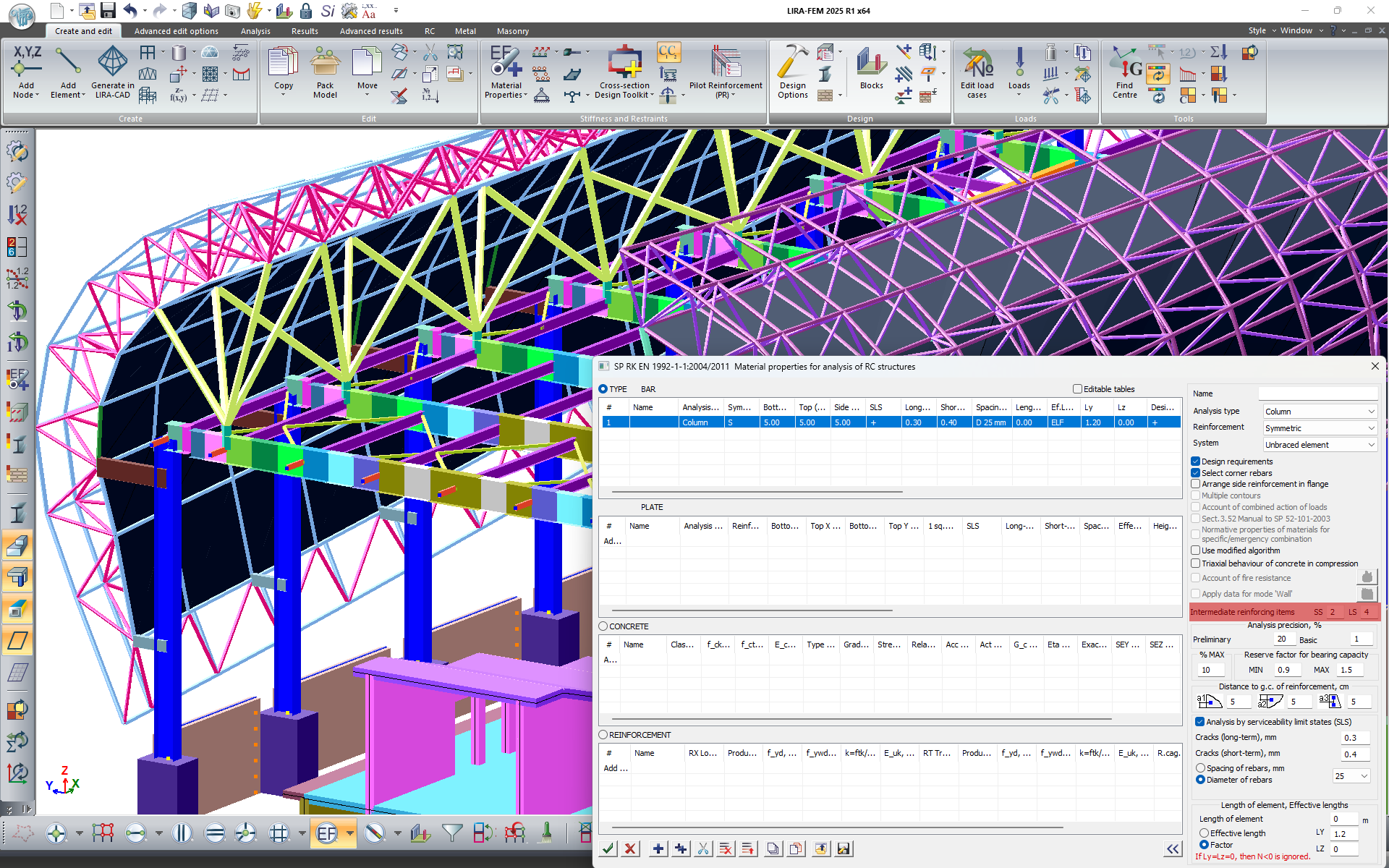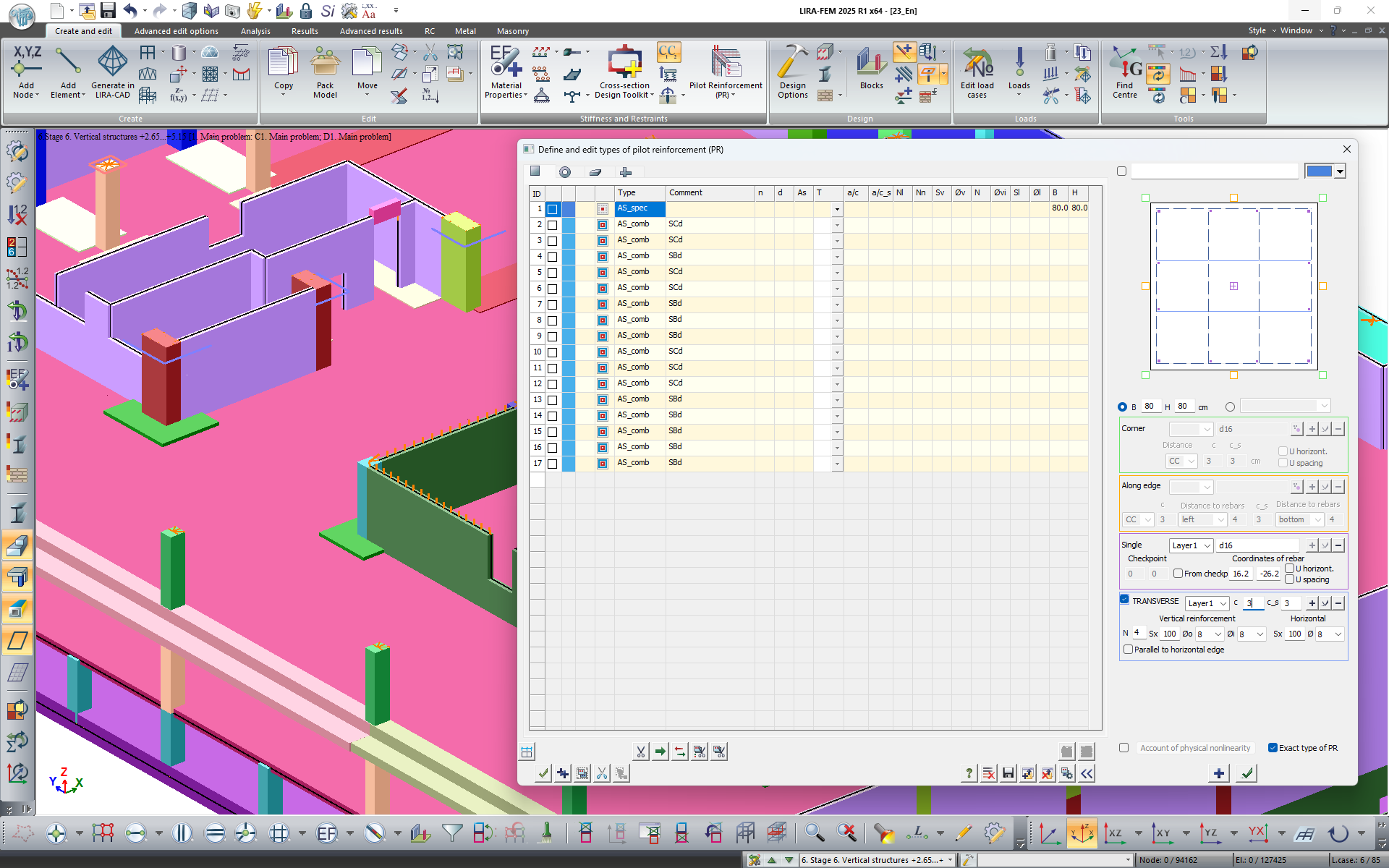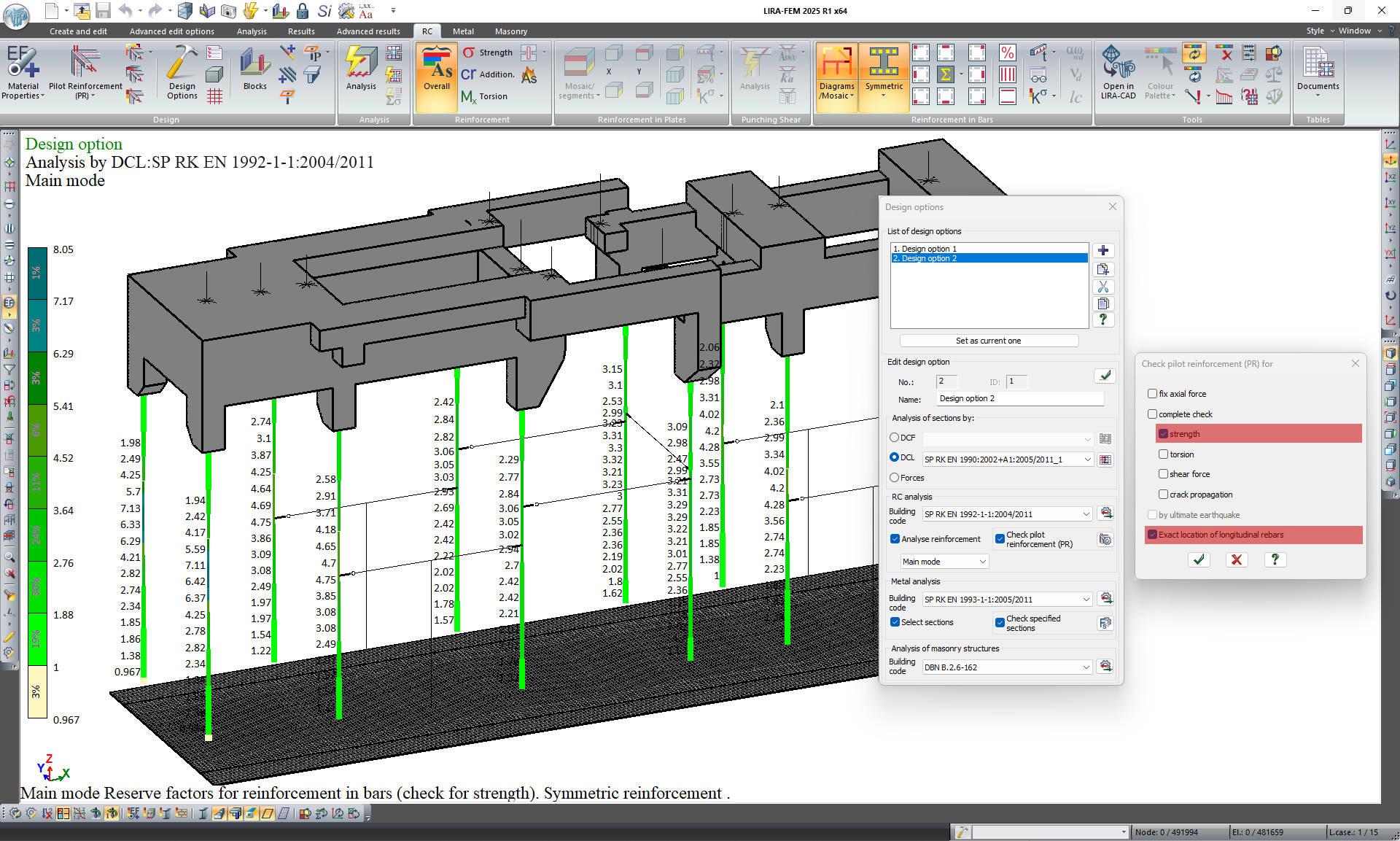VERSION HISTORY
LIRA-FEM
Analysis & design of reinforced concrete (RC) structures
- For the DBN V.2.6-98:2009 standards, the option to output the safety factor for the specified reinforcement as an envelope result for each check has been added.
- For the DBN V.2.6-98:2009 standards, the option to determine the strength safety factor for precise reinforcement pattern in PR types has been added.
Analysis & design of reinforced concrete (RC) structures
Within the Wall reinforcement type, it is possible to perform analysis of walls and pylons with a detailed arrangement of all rebars and selection of zones of corner reinforcement and reinforcement along edge.
An alternative method is implemented for determining reserve factors for types of pilot reinforcement at a fixed value of axial force.
Added option to define additional number of intermediate reinforcing items for increasing reinforcement. This option is available for the following list of element types: bar, column, beam.
New option to define any number of horizontal cuts of transverse reinforcement to check the types of pilot reinforcement. For the exact type of PR, there is an option to create several layers of transverse reinforcement.
For the check of load-bearing capacity, the user could define an exact location of the reinforcement bars without grouping them into zones as is done for a complete analysis, e.g. with account of torsion.
New option to create and edit names of custom materials: concrete and reinforcement.
Reinforced concrete (RC) structures
-
Enhanced algorithm for analysis of reinforcement with off-centre tension at small eccentricities (including by strength).
-
Analysis of reinforcement is optimized with account of fire resistance (now it is possible to avoid the significant increase in reinforcement in individual elements where the compressive or least tensile reinforcement was increased in cases of extremely small compression zones of concrete).
-
For the SP RK EN 1992-1-1:2004/2011, the condition "not less than 1.5 wall thickness" is added to the parameters for determining the min dimension of the end zone Lc of a plastic wall.
-
For plates, in the analysis for width of crack propagation by Karpenko method, the value Ψs=1 may be fixed now.
Improvements to the module for analysis & design of reinforced concrete (RC) structures
-
For the SP RK 1992-1-1:2004/2011, in analysis of "Column" and "Pylon" element types, there may be more intermediate reinforcing items for increasing reinforcement. This option increases the analysis accuracy and makes the selection of reinforcement more efficient. The additional items are located at the edges of cross-sections. The number of such items may be specified as the input data for RC materials.
-
For the new reinforcement type "Wall (Bar)", the strength analysis of walls and pylons is implemented based on the linear distribution of strain in the normal section. The new reinforcement type may be assigned to bar elements of the model and bar analogues. The bearing capacity of a normal wall section is determined based on the distribution of normal stresses in the section. The relationship between the normal stresses and relative strains is based on the stress-strain diagram specified for concrete and reinforcement. The position of the reinforcement items depends on the spacing or number of reinforcement bars (rebars) along the length of the wall.
-
For the type of reinforcement "Wall (Bar)", the peripheral reinforcement at the ends of walls are computed in earthquake analysis by sect. 5.4.3.4 SP RK EN 1998-1:2004/2012 "Design of structures for earthquake resistance. Part 1. General rules, seismic actions and rules for buildings". This analysis is carried out when the "Plastic Wall" mode is activated.
-
New option to compute the percentage ratio of the reinforcement area of selected/defined longitudinal reinforcement along X, Y and XY-axes (total) to the cross-sectional area of the plate.
-
It is possible to create a custom steel table with rebars; this table may be used to select required reinforcement.
-
The program is updated to support the base edition of EN 1992-1-1:2004 + A1:2014. "Eurocode 2: Design of concrete structures. Part 1-1: General rules and rules for buildings".













